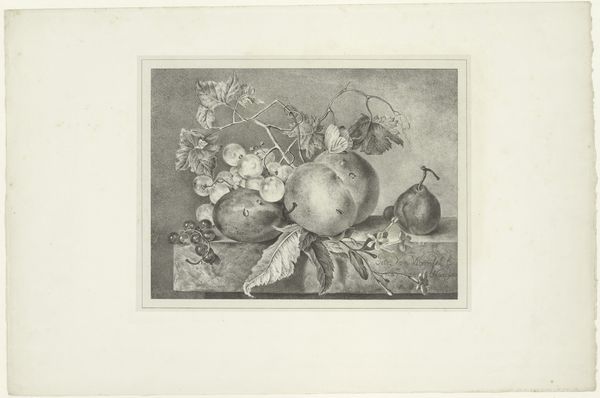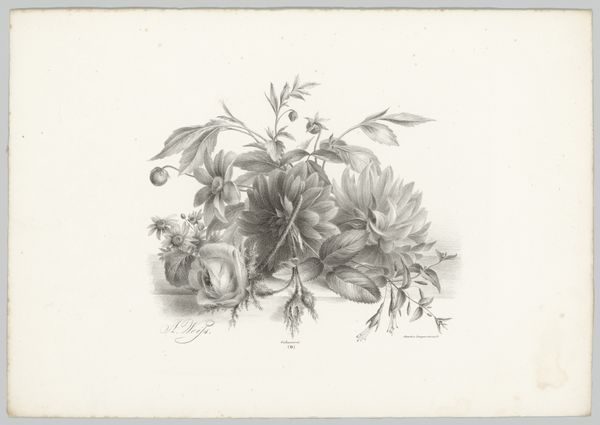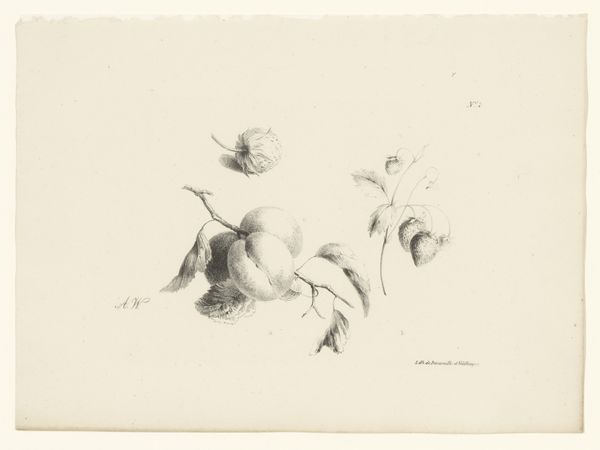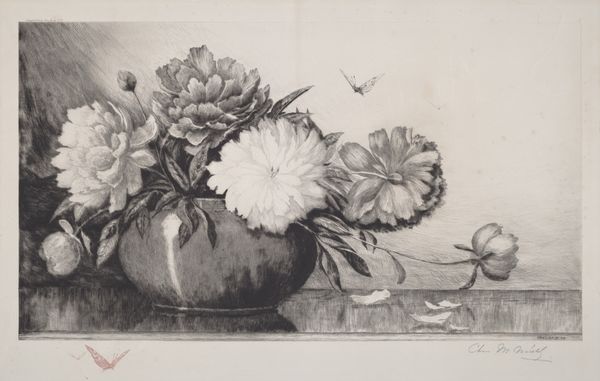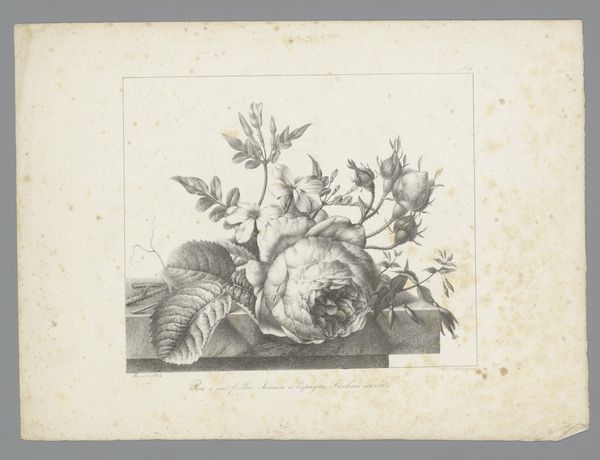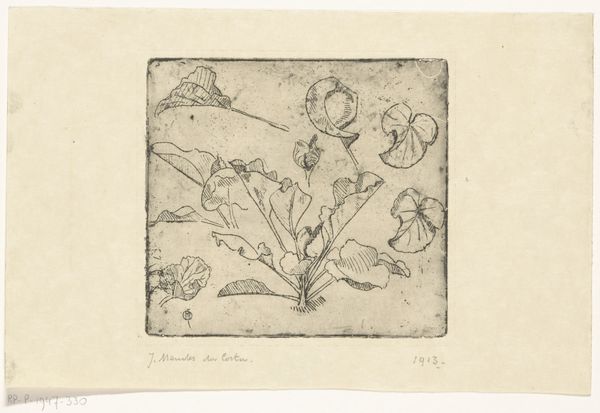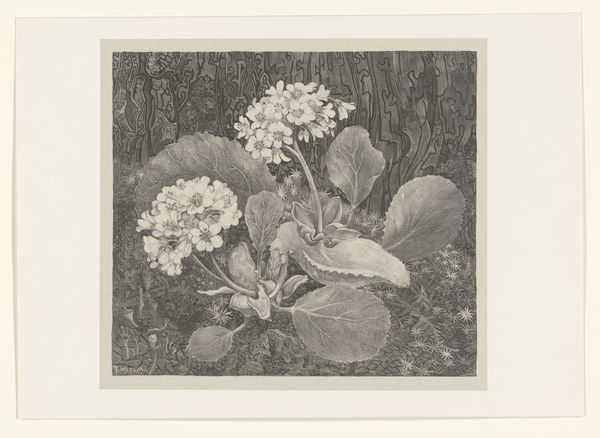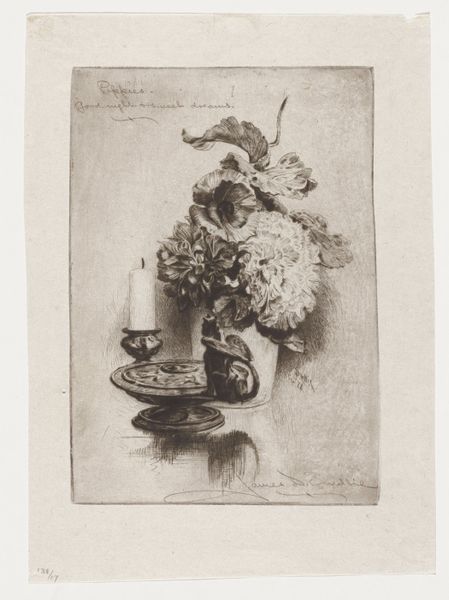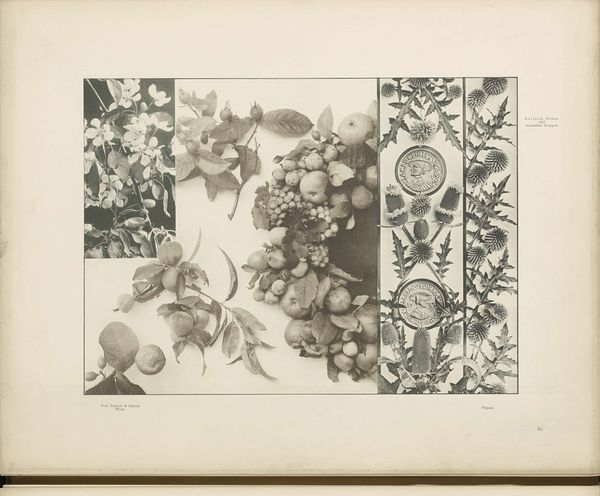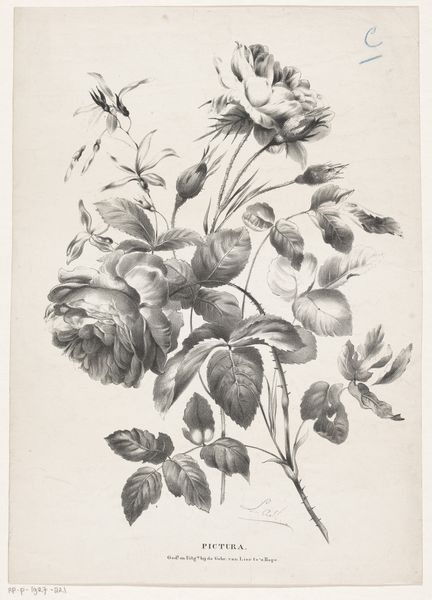
drawing, print, paper, graphite
#
drawing
# print
#
paper
#
romanticism
#
graphite
Dimensions: height 355 mm, width 535 mm
Copyright: Rijks Museum: Open Domain
Petronella van Woensel made this still life of flowers on a marble slab sometime in the late 18th or early 19th century. The image speaks to the Dutch fascination with the natural world and the fashion for floral painting at that time, but it is also a potent display of national pride. It was in the Netherlands that the floral still life was first established as an independent genre. Looking at the image, we can see how the artist makes use of visual codes, cultural references, and historical associations to create meaning. The arrangement of the flowers, the inclusion of insects, the use of light and shadow - all of these elements contribute to the overall effect of the work. But the choice of flowers themselves—roses, carnations, and morning glory—may speak to the unique character of this region. To truly understand this work, we must consider the social and institutional context in which it was made. By examining the historical records, we can gain insight into the artist's life and the cultural forces that shaped her vision. Art, after all, is not created in a vacuum. It is a product of its time and place, reflecting the values and beliefs of the society in which it is made.
Comments
No comments
Be the first to comment and join the conversation on the ultimate creative platform.

